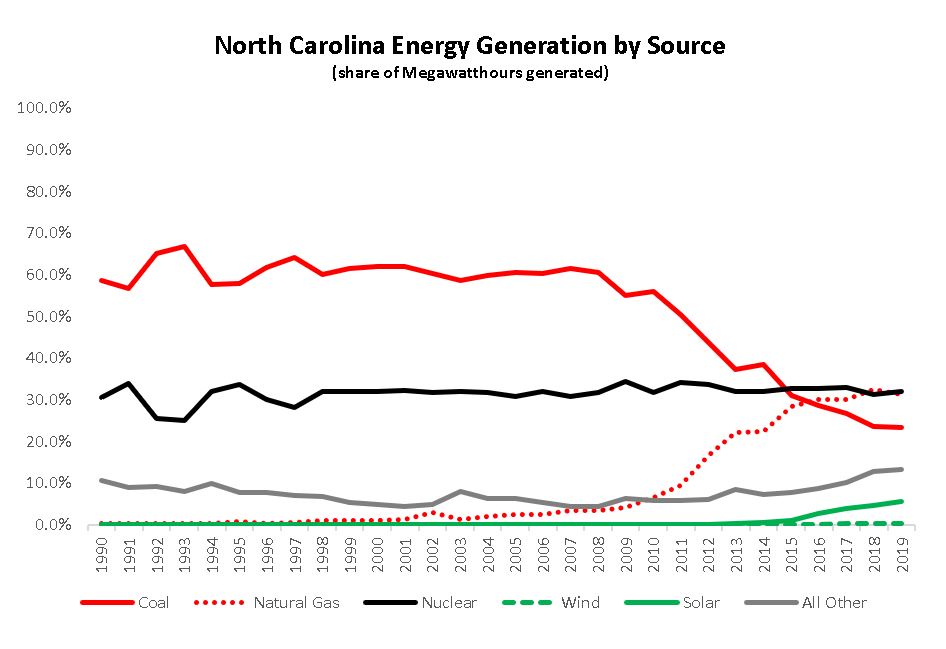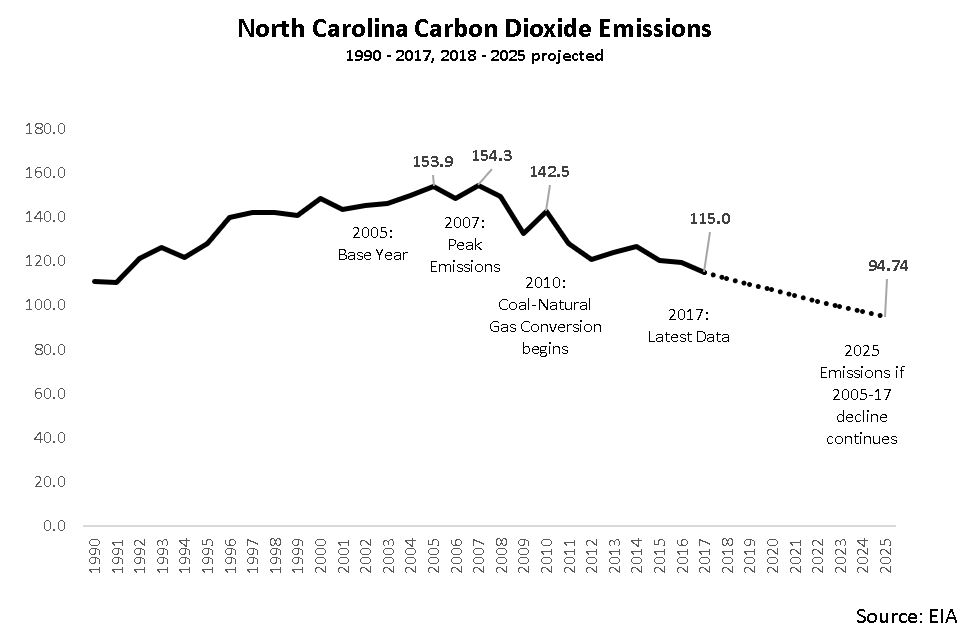President-elect Joe Biden has nominated Michael Regan to lead the EPA. Regan worked at the Environmental Protection Agency (EPA) for years, and has been North Carolina’s environmental chief since 2018.
As North Carolina’s top environmentalist, Regan has opposed constructing natural gas infrastructure, claiming
North Carolina’s clean energy future is not dependent on adding more natural gas infrastructure
we should invest in clean, renewable energy sources and the economic benefits of energy innovation.
But, the data argue otherwise.
Below are two charts based on the data maintained by the Energy Information Administration (EIA). The first chart presents the amount of energy generated in North Carolina by power source. These data clearly show that coal’s share of North Carolina’s generation infrastructure began to decline precipitously around 2008. For the most part, the decline in coal generation was replaced by increased generation from natural gas.

Source: EIA
The EIA data are good news for North Carolina’s economy because natural gas produces cheap reliable energy, while wind and solar are still unreliable energy sources. But, what is truly remarkable is the impact on North Carolina’s greenhouse gas (GHG) emissions.
Tracking the EIA’s estimate of North Carolina’s carbon dioxide emissions demonstrates that emissions peaked in 2007, which lines up with the state’s conversion from coal to natural gas. Further, since wind still has not obtained a significant share of the state’s power generation and solar’s share did not grow meaningfully until 2017, the decline in North Carolina’s emissions have been primarily driven by the conversion of the state’s energy infrastructure from coal to natural gas.

Even more remarkable: since 2005 emissions in North Carolina have been declining 2.4 percent annually. If emission declines simply continued along this path, then emissions would be 38.4 percent below 2005’s levels by 2025. This decline achieves an important milestone. According to the October 2018 executive order by North Carolina’s Governor Roy Cooper, North Carolina’s goal was to reduce the state’s GHG emissions to 40 percent below 2005’s levels by 2025. Continuing the conversion from coal to natural gas is, consequently, an essential part of meeting this ambitious goal.
While Regan played an important role establishing the emissions target, he has not played a meaningful part helping the state reach them. Remember, he became the environmental chief in 2018, long after the decline in emissions had already begun. In fact, his obstruction to pipelines and other natural gas infrastructure actually creates obstructions that make meeting the state’s emission goals more difficult.
North Carolina’s experience demonstrates the importance of allowing market-driven incentives to determine which low-emission generation sources should power the U.S. economy. Should he be confirmed, Michael Regan’s tenure as EPA chief could be a great success if he would only heed the lessons from his home state.
Dr. Wayne Winegarden is senior fellow in business and economics at the Pacific Research Institute, and director of PRI’s Center for Medical Economics and Innovation.


